- Clone
- C068C2 (See other available formats)
- Regulatory Status
- RUO
- Other Names
- MMR (macrophage mannose receptor), MR (mannose receptor), MRC1
- Isotype
- Rat IgG2a, κ
- Barcode Sequence
- TCAACTCGGTGTTGC
| Cat # | Size | Price | Quantity Check Availability | ||
|---|---|---|---|---|---|
| 141743 | 10 µg | $369.00 | |||
CD206, also known as mannose receptor (MR), is a 175 kD type I membrane protein. It is a pattern recognition receptor (PRR) belonging to the C-type lectin superfamily. MR is expressed on macrophages, dendritic cells, Langerhans cells, and hepatic or lymphatic endothelial cells. MR recognizes a range of microbial carbohydrates bearing mannose, fucose, or N-acetyl glucosamine through its C-type lectin-like carbohydrate recognition domains, sulfated carbohydrate antigens through its cysteine-rich domain, and collagens through its fibronectin type II domain. MR mediates endocytosis and phagocytosis as well as activation of macrophages and antigen presentation. It plays an important role in host defense and provides a link between innate and adaptive immunity. Recently, MR on lymphatic endothelial cells was found to be involved in leukocyte trafficking and a contributor to the metastatic behavior of cancer cells. It suggests that MR may be a potential target in controlling inflammation and cancer metastasis by targeting the lymphatic vasculature.
Product Details
- Verified Reactivity
- Mouse
- Antibody Type
- Monoclonal
- Host Species
- Rat
- Immunogen
- Recombinant mouse CD206 (MMR)
- Formulation
- Phosphate-buffered solution, pH 7.2, containing 0.09% sodium azide and EDTA
- Preparation
- The antibody was purified by chromatography and conjugated with TotalSeq™-B oligomer under optimal conditions.
- Concentration
- 0.5 mg/mL
- Storage & Handling
- The antibody solution should be stored undiluted between 2°C and 8°C. Do not freeze.
- Application
-
ICPG - Quality tested
- Recommended Usage
-
Each lot of this antibody is quality control tested by intracellular immunofluorescent staining with flow cytometric analysis and the oligomer sequence is confirmed by sequencing. TotalSeq™-B antibodies are compatible with 10x Genomics Single Cell Gene Expression Solutions.
To maximize performance, it is strongly recommended that the reagent be titrated for each application, and that you centrifuge the antibody dilution before adding to the cells at 14,000xg at 2 - 8°C for 10 minutes. Carefully pipette out the liquid avoiding the bottom of the tube and add to the cell suspension. For Proteogenomics analysis, the suggested starting amount of this reagent for titration is ≤ 0.5 µg per million cells in 100 µL volume. Refer to the corresponding TotalSeq™ protocol for specific staining instructions.
Buyer is solely responsible for determining whether Buyer has all intellectual property rights that are necessary for Buyer's intended uses of the BioLegend TotalSeq™ products. For example, for any technology platform Buyer uses with TotalSeq™, it is Buyer's sole responsibility to determine whether it has all necessary third party intellectual property rights to use that platform and TotalSeq™ with that platform. - Application Notes
-
Clone C068C2 recognizes a region similar to clone MR5D3, based on the ability of the clones to block each other. Additional reported applications (for the relevant formats) include: spatial biology (IBEX)4,5.
- Additional Product Notes
-
TotalSeq™ reagents are designed to profile protein levels at a single cell level following an optimized protocol similar to the CITE-seq workflow. A compatible single cell device (e.g. 10x Genomics Chromium System and Reagents) and sequencer (e.g. Illumina analyzers) are required. Please contact technical support for more information, or visit biolegend.com/totalseq.
The barcode flanking sequences are GTGACTGGAGTTCAGACGTGTGCTCTTCCGATCTNNNNNNNNNN (PCR handle), and NNNNNNNNNGCTTTAAGGCCGGTCCTAGC*A*A (capture sequence). N represents either randomly selected A, C, G, or T, and * indicates a phosphorothioated bond, to prevent nuclease degradation.
View more applications data for this product in our Scientific Poster Library. -
Application References
(PubMed link indicates BioLegend citation) -
- Keller J, et al. 2012. Biochem Biophys Res Commun. 417:217. PubMed
- Ito H, et al. 2012. J Am Soc Nephrol. 23:1797. PubMed
- Yang X, et al. 2015. PNAS. 112:2900. PubMed
- Radtke AJ, et al. 2020. Proc Natl Acad Sci U S A. 117:33455-65. (SB) PubMed
- Radtke AJ, et al. 2022. Nat Protoc. 17:378-401. (SB) PubMed
- RRID
-
AB_3083125 (BioLegend Cat. No. 141743)
Antigen Details
- Structure
- Type I transmembrane protein, 175 kD, C-type lectin superfamily
- Distribution
-
Macrophages, dendritic cells, Langerhans cells, liver endothelial cells
- Function
- Pathogen recognition, endocytosis and phagocytosis, antigen presentation
- Ligand/Receptor
- Antigen containing mannose, fucose, or an N-acetyl glucosamine
- Cell Type
- Dendritic cells, Endothelial cells, Langerhans cells, Macrophages
- Biology Area
- Cell Biology, Immunology, Innate Immunity, Signal Transduction
- Molecular Family
- CD Molecules
- Antigen References
-
1. Wileman TE, et al. 1986. P. Natl. Acad. Sci. USA 83:2501.
2. Apostolopoulos V, et al. 2001. Curr. Mol. Med. 1:469.
3. Burgdorf S, et al. 2006. J. Immunol. 176:6770.
4. McKenzie EJ, et al. 2007. J. Immunol. 178:4975. - Gene ID
- 17533 View all products for this Gene ID
- UniProt
- View information about CD206 on UniProt.org
Other Formats
View All CD206 Reagents Request Custom ConjugationCompare Data Across All Formats
This data display is provided for general comparisons between formats.
Your actual data may vary due to variations in samples, target cells, instruments and their settings, staining conditions, and other factors.
If you need assistance with selecting the best format contact our expert technical support team.
-
Biotin anti-mouse CD206 (MMR)
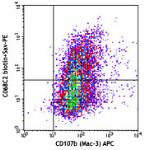
Thioglycollate-elicited Balb/c peritoneal macrophages were s... 
-
Purified anti-mouse CD206 (MMR)
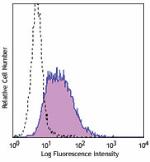
Thioglycollate-elicited BALB/c mouse peritoneal macrophages ... -
FITC anti-mouse CD206 (MMR)
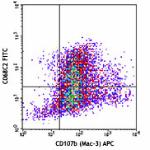
Thioglycollate-elicited Balb/c macrophages were fixed/pemeab... 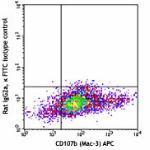
-
PE anti-mouse CD206 (MMR)
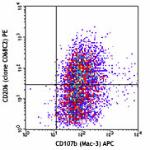
Thioglycollate-elicited BALB/c peritoneal macrophages were s... 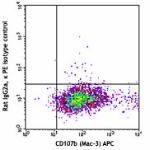
-
APC anti-mouse CD206 (MMR)
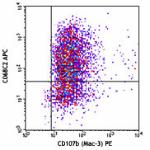
Thioglycollate-elicited BALB/c peritoneal macrophages were s... 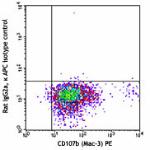
-
Alexa Fluor® 488 anti-mouse CD206 (MMR)
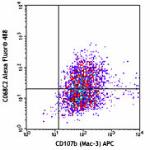
Thioglycollate-elicited BALB/c peritoneal macrophages were s... 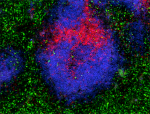
C57BL/6 mouse frozen lymph node section fixed, permeabilized... 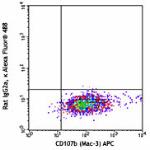
-
Alexa Fluor® 647 anti-mouse CD206 (MMR)
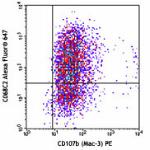
Thioglycollate-elicited BALB/c peritoneal macrophages were s... 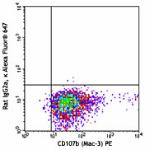

C57BL/6 mouse frozen lymph node section was fixed with 4% pa... -
PerCP/Cyanine5.5 anti-mouse CD206 (MMR)
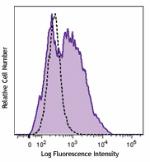
Thioglycollate-elicited BALB/c mouse peritoneal macrophages ... -
PE/Cyanine7 anti-mouse CD206 (MMR)

Thioglycollate-elicited BALB/c mouse peritoneal macrophages ... -
Brilliant Violet 421™ anti-mouse CD206 (MMR)

Thioglycollate-elicited BALB/c mouse peritoneal macrophages ... 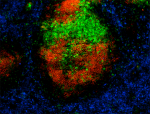
C57BL/6 mouse frozen lymph node section was fixed with 4% pa... 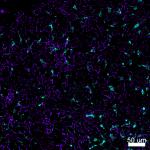
Confocal image of C57BL/6 mouse thymus sample acquired using... 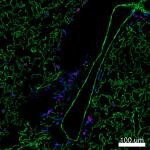
Confocal image of C57BL/6 mouse lung sample acquired using t... 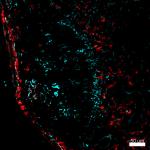
Mice were injected subcutaneously with sheep red blood cells... 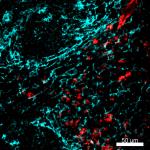
Mice were injected subcutaneously with sheep red blood cells... -
Brilliant Violet 605™ anti-mouse CD206 (MMR)

Thioglycollate-elicited Balb/c peritoneal macrophages were f... 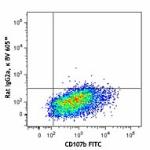
-
Brilliant Violet 650™ anti-mouse CD206 (MMR)
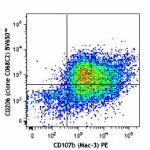
Thioglycollate-elicited BALB/c mouse peritoneal macrophages ... 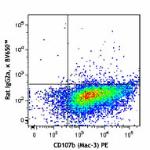
-
Alexa Fluor® 594 anti-mouse CD206 (MMR)
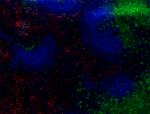
C57BL/6 mouse frozen spleen section was fixed with 4% parafo... -
Brilliant Violet 711™ anti-mouse CD206 (MMR)
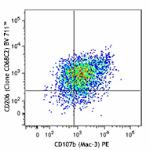
Thioglycollate-elicited Balb/c peritoneal macrophages were f... 
-
Brilliant Violet 785™ anti-mouse CD206 (MMR)
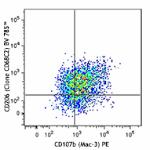
Thioglycollate-elicited Balb/c peritoneal macrophages were f... 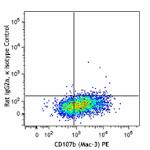
-
PE/Dazzle™ 594 anti-mouse CD206 (MMR)
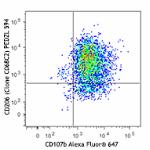
Thioglycollate-elicited Balb/c peritoneal macrophages were f... 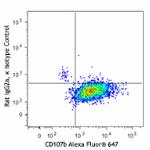
-
Alexa Fluor® 700 anti-mouse CD206 (MMR)
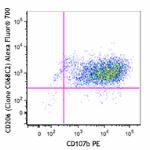
Thioglycollate-elicited BALB/c peritoneal macrophages were f... 
-
Spark YG™ 570 anti-mouse CD206 (MMR)
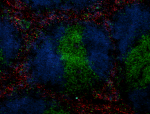
C57BL/6 mouse frozen spleen section was fixed with 4% parafo... -
PE/Cyanine5 anti-mouse CD206 (MMR)

Thioglycollate-elicited BALB/c peritoneal macrophages were f... -
PE/Fire™ 700 anti-mouse CD206 (MMR)

Thioglycollate-elicited BALB/c peritoneal macrophages were s... -
TotalSeq™-B0173 anti-mouse CD206 (MMR)
-
Spark Red™ 718 anti-mouse CD206 (MMR) (Flexi-Fluor™)
-
Spark Blue™ 574 anti-mouse CD206 (MMR) (Flexi-Fluor™)
